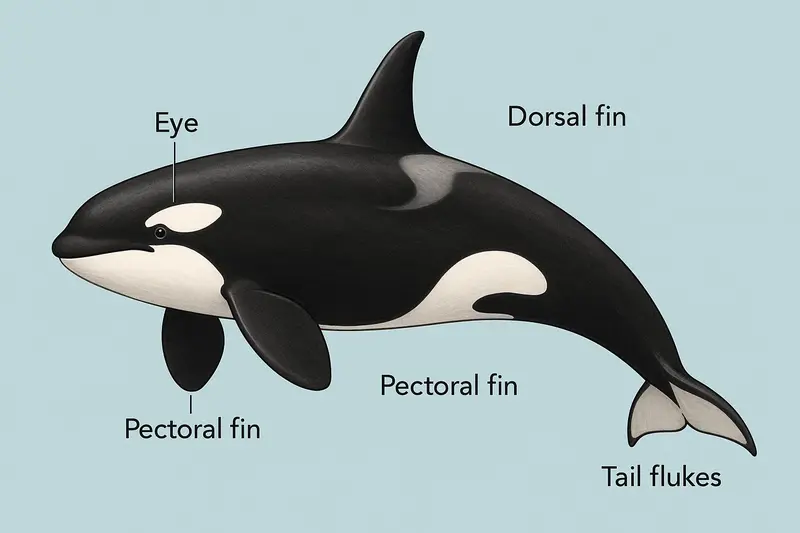Orcas, also known as killer whales (Orcinus orca), are among the most intelligent and charismatic marine mammals on Earth. As apex predators, their biology is finely tuned for hunting, communication, and survival in diverse oceanic habitats. One of the most misunderstood aspects of orca anatomy is the location of their eyes. Many people mistakenly assume that orca eyes are positioned near their white eye-like patches. In this article, we take a scientific deep dive into orca anatomy, exploring where their eyes are truly located, how they function, and why their positioning is essential to their survival.

Contrary to popular belief, the actual eyes of an orca are not located in the iconic white eye patches. Instead, orca eyes are located just below and slightly behind the corners of their mouths. These small, dark eyes are embedded within the orca's dark-colored head, making them less visible from a distance.
The large white patches above and behind the orca's mouth are not eyes at all. These patches are pigmentation patterns that may serve various purposes, including:
Camouflage and disruptive coloration
Mimicry to confuse prey or predators
Social signaling within orca pods
Having eyes positioned lower and toward the sides of the head provides some protection against injury from prey like seals and large fish that may thrash or resist capture.
This lateral placement gives orcas a wide field of vision—close to 360 degrees. Though they may have a blind spot directly in front of their snout and behind their head, they can compensate with body movement and echolocation.
By embedding their eyes in recessed areas, orcas maintain a hydrodynamic body shape that minimizes drag while swimming at high speeds.
Orcas have excellent vision both in and out of water. Their eyes are adapted to handle the refraction and light differences between air and seawater. A specialized cornea and a well-developed tapetum lucidum (a layer behind the retina) enhance their ability to see in low-light or murky conditions.
Due to the side placement of their eyes, orcas primarily use monocular vision (seeing with one eye at a time) but can achieve some degree of binocular vision (overlapping field of vision) by adjusting their body orientation.
Thanks to the tapetum lucidum and high rod density in their retinas, orcas can see well in dim environments, such as during deep dives or in polar regions with extended darkness.

Orcas rely heavily on echolocation for navigation, prey detection, and communication. Their "acoustic eyes" allow them to form a 3D map of their surroundings.
Orcas produce a variety of vocalizations including clicks, whistles, and calls. These sounds are emitted from their melon (a fatty structure in their forehead) and received via the lower jaw, which is acoustically connected to the ear bones.
Their skin, especially around the rostrum and dorsal fin, is sensitive to touch. Orcas are known to rub against each other and surfaces in what appears to be a social or sensory behavior.
Orcas share similar eye placement with dolphins and other toothed whales (odontocetes). In contrast, baleen whales have slightly more forward-facing eyes due to different feeding and ecological strategies.
The current eye placement of orcas likely evolved as a compromise between maximizing environmental awareness, protecting sensory organs, and maintaining hydrodynamic efficiency.
Nature documentaries, movies, and illustrations often mislead audiences into thinking the white eye patches are actual eyes. This can create confusion about orca behavior and sensory abilities.
It is crucial for educators, zookeepers, and wildlife interpreters to clarify the anatomy of orcas to help people better understand and appreciate their complex biology.
Understanding the true location and function of an orca's eyes not only corrects a common myth but also reveals the incredible adaptations that allow these animals to thrive in diverse and demanding ocean habitats.
From their cryptic eye placement to their sophisticated visual and acoustic systems, orcas demonstrate the elegance of marine mammal evolution. By appreciating these details, we gain a deeper respect for one of the ocean’s most remarkable predators.
animal tags: orca-eyes
We created this article in conjunction with AI technology, then made sure it was fact-checked and edited by a Animals Top editor.